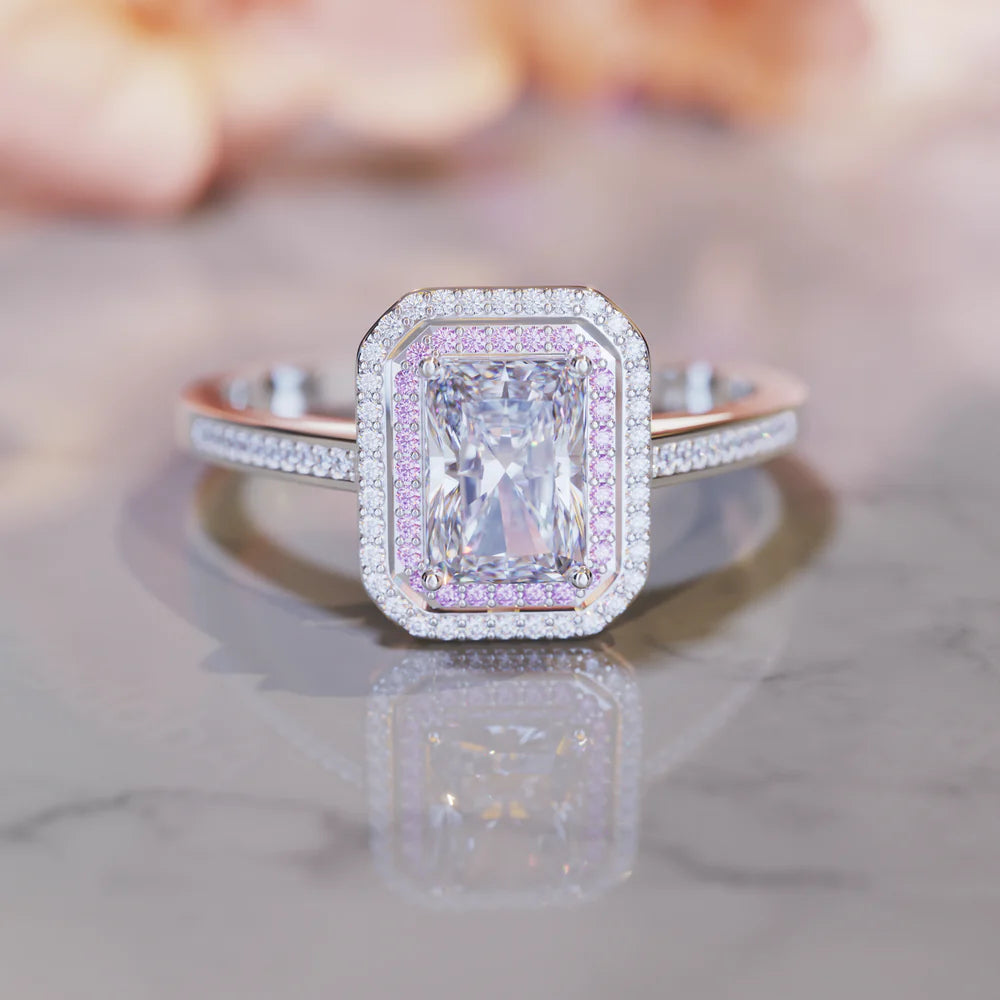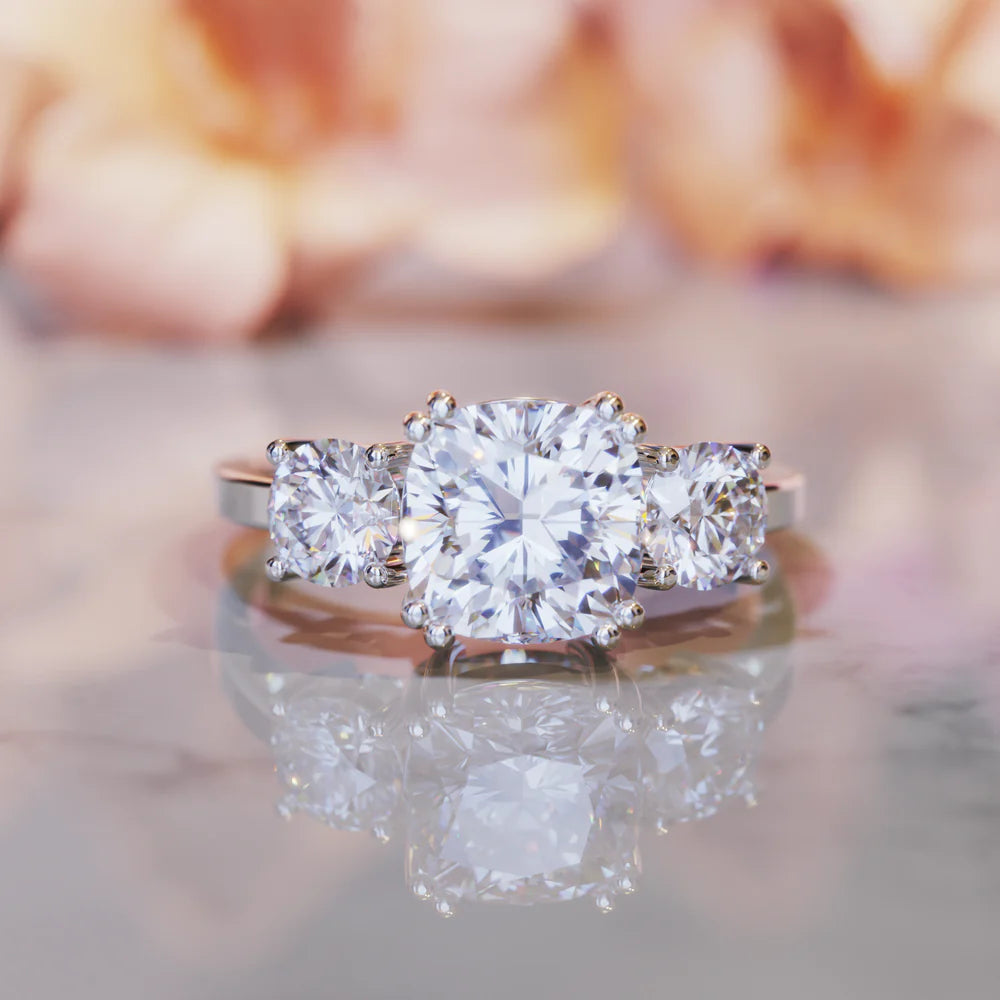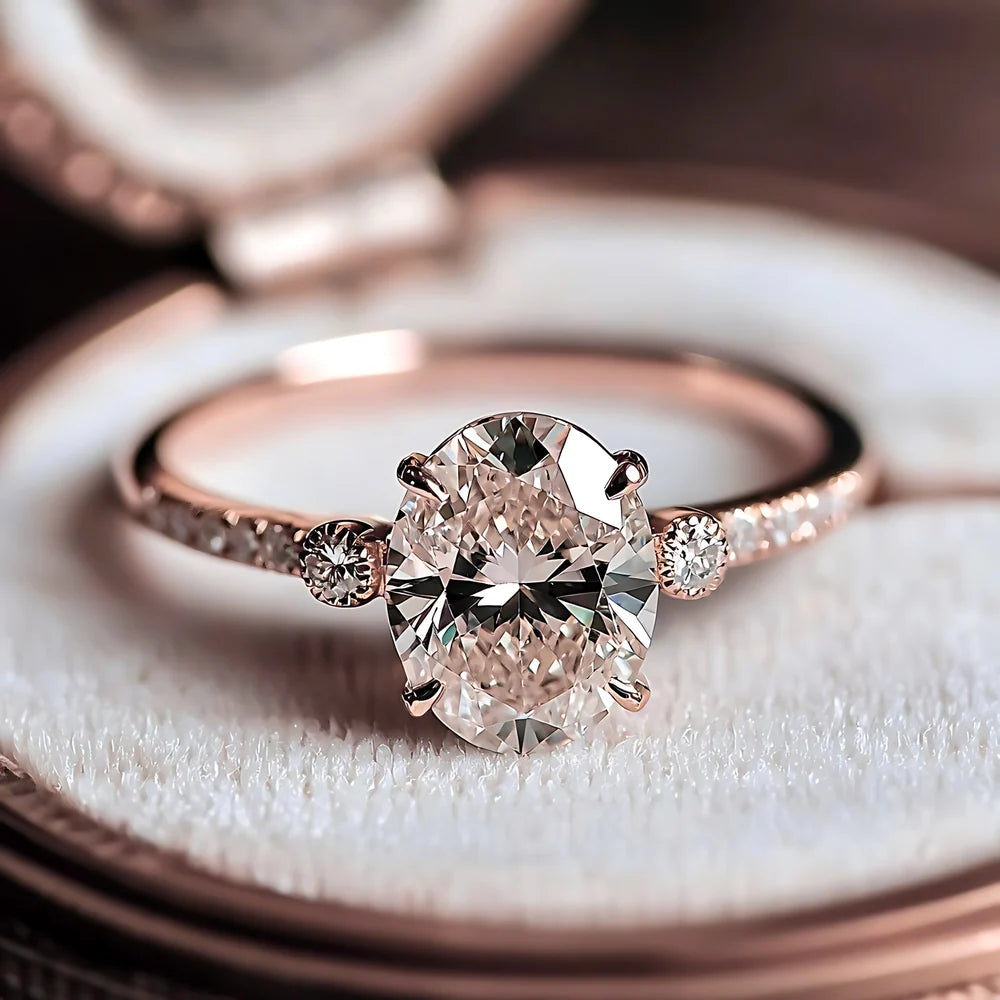
Moissanite vs Diamond: The Ultimate Comparison Guide for Buyers
When it comes to choosing a gemstone for rings, especially for engagement or promise rings, diamonds have traditionally taken center stage. But with the rise of ethical, affordable, and equally beautiful options like moissanite, many buyers are questioning the value and necessity of purchasing a diamond. This guide breaks down everything you need to know about moissanite vs. diamond to help you make an informed choice.
1. What is Moissanite, and How Does it Compare to Diamond?
Moissanite is a lab-grown gemstone originally discovered in meteorite fragments by Dr. Henri Moissan. Today, it’s synthetically produced to offer a brilliant, ethical alternative to diamonds. Diamonds, on the other hand, are naturally occurring stones formed over billions of years under extreme pressure deep within the Earth.
Key Differences
- Origin: Moissanite is lab-grown, while diamonds are either mined or lab-created.
- Ethics: Moissanite is inherently conflict-free and sustainable since it's created in controlled environments. Diamonds, especially natural ones, come with ethical concerns related to mining practices.
2. Brilliance and Sparkle: Which Shines Brighter?
One of the biggest draws of moissanite is its exceptional brilliance. Moissanite has a higher refractive index (2.65-2.69) than diamond (2.42), which means it disperses light more intensely and creates a noticeable "fire" effect.
Moissanite’s Sparkle
- Known for its rainbow-like sparkle, moissanite reflects more colorful light than diamonds. This brilliance is particularly noticeable in direct sunlight, where moissanite can outshine most diamonds.
Diamond’s Sparkle
- Diamonds offer a classic "white" sparkle, prized for its elegance and subtlety. However, in terms of sheer light dispersion, diamonds fall slightly behind moissanite.
Bottom Line: If you want a stone that truly catches the eye with its sparkle, moissanite has a slight edge. But if you prefer a more subdued, classic look, diamonds might appeal more.
3. Durability: Which Gemstone Lasts Longer?
Durability is essential for gemstones intended for daily wear, like engagement rings. Here’s how moissanite and diamonds measure up in terms of strength.
- Diamond: With a hardness of 10 on the Mohs scale, diamonds are the hardest natural material on Earth. This makes them incredibly resistant to scratching and perfect for daily wear.
- Moissanite: Ranking at 9.25 on the Mohs scale, moissanite is also highly durable and suitable for everyday use. While slightly softer than diamonds, it’s still one of the hardest gemstones available.
Bottom Line: Both stones are highly durable, but diamonds are slightly harder. However, moissanite is durable enough to withstand daily wear without concerns about scratching.
4. Price: Which Offers Better Value?
When it comes to price, moissanite is the clear winner. A one-carat diamond can cost thousands of dollars, whereas a comparable moissanite stone can be 80-90% less expensive.
Price Comparison
- Diamond: The cost of a diamond depends on the 4 Cs (cut, color, clarity, and carat weight), with a high-quality one-carat diamond costing upwards of $5,000.
- Moissanite: A one-carat moissanite ring typically costs around $600-$1,000, depending on quality and cut.
Bottom Line: Moissanite provides high aesthetic value without the high cost. It’s an ideal choice for budget-conscious buyers who still want a beautiful, long-lasting gemstone.
5. Ethical and Environmental Impact: A Responsible Choice
For buyers concerned with ethical sourcing, moissanite is an inherently responsible choice.
- Diamond Mining: Diamond mining is associated with significant environmental impact, including land degradation, water pollution, and ecological destruction. Additionally, “blood diamonds” or “conflict diamonds” are mined in war zones and sold to finance conflict, causing human suffering.
- Moissanite Production: Moissanite is created in labs, making it a conflict-free and eco-friendly alternative with a much smaller environmental footprint.
Bottom Line: If you’re looking to make an eco-conscious and ethically sound choice, moissanite stands as a clear winner.
6. Color and Clarity: Which Looks More Perfect?
Moissanite Color:
- Moissanite is generally near-colorless, though some stones may have slight yellow or gray undertones. High-quality moissanite is nearly indistinguishable from a diamond in terms of color.
Diamond Color:
- Diamonds are graded on a scale from D (colorless) to Z (noticeably yellow or brown). Colorless diamonds (D-F) are rare and expensive.
Clarity:
- Moissanite is lab-created, so it tends to be free of the natural imperfections (inclusions) found in diamonds.
- Diamonds, being natural, often contain inclusions, which are imperfections or "birthmarks."
Bottom Line: Moissanite typically offers a consistent, clear appearance, whereas diamond quality varies and can come at a higher price if you’re looking for a flawless appearance.
7. Investment Value: Does Either Hold Value Over Time?
Diamonds are often marketed as a valuable investment, but this is somewhat misleading. Diamonds lose significant resale value once purchased and are difficult to liquidate without a substantial loss.
Investment Reality:
- Diamonds: Due to high retail markups, diamonds usually lose 30-50% of their value immediately after purchase.
- Moissanite: Moissanite’s value is in its beauty and ethical value rather than resale potential, as it typically doesn’t hold resale value in the same way as diamonds, but also doesn't lose its inherent value on purchase.
Bottom Line: Neither moissanite nor diamonds are great investment stones, but moissanite offers far better initial value without the high markup.
| Feature | Moissanite | Diamond |
|---|---|---|
| Brilliance | Higher "fire" and rainbow sparkle | Classic white sparkle |
| Durability | 9.25 on Mohs scale | 10 on Mohs scale |
| Price | 80-90% less than diamonds | High; varies by quality |
| Ethical Impact | Lab-grown, conflict-free | Environmental and ethical concerns |
Conclusion: Which One Should You Choose?
If you're looking for a beautiful, ethical, and affordable gemstone, moissanite is a strong contender that delivers incredible value without compromising on appearance or durability. On the other hand, if you prioritize tradition, a classic diamond may still appeal to you. Ultimately, moissanite provides an accessible luxury option, making it the smart choice for those seeking both quality and peace of mind.
Ready to explore moissanite options? Check out our best-selling moissanite rings collection and discover why so many are choosing moissanite over diamond today.



Leave a comment
This site is protected by hCaptcha and the hCaptcha Privacy Policy and Terms of Service apply.